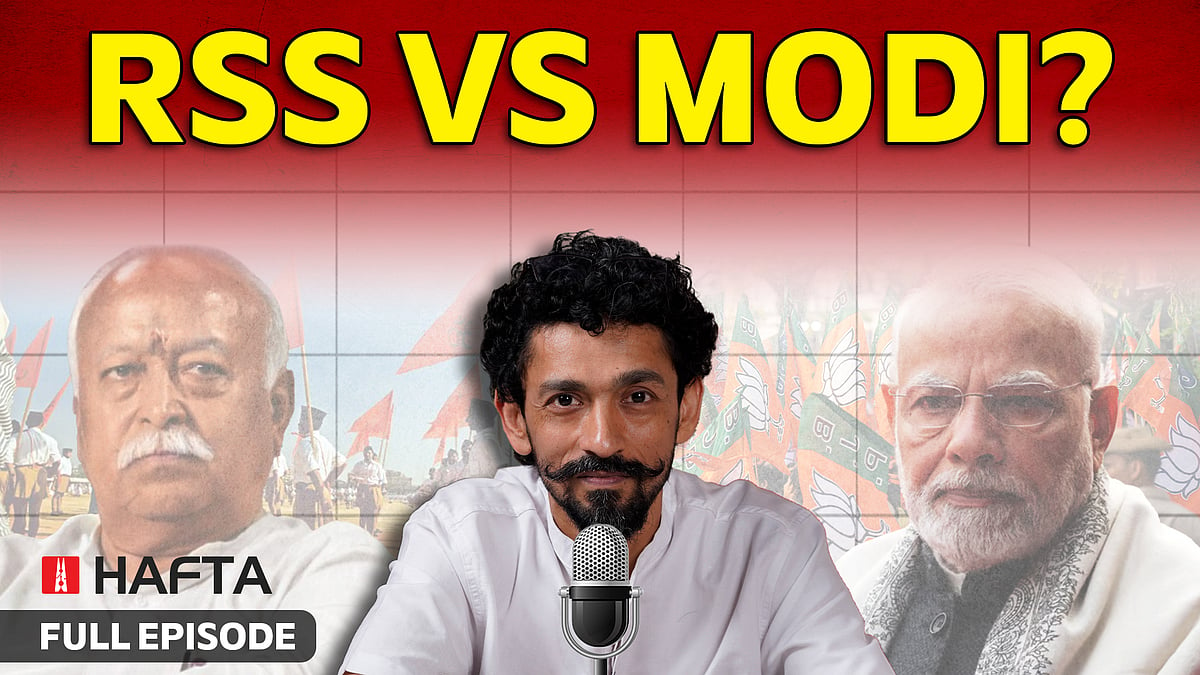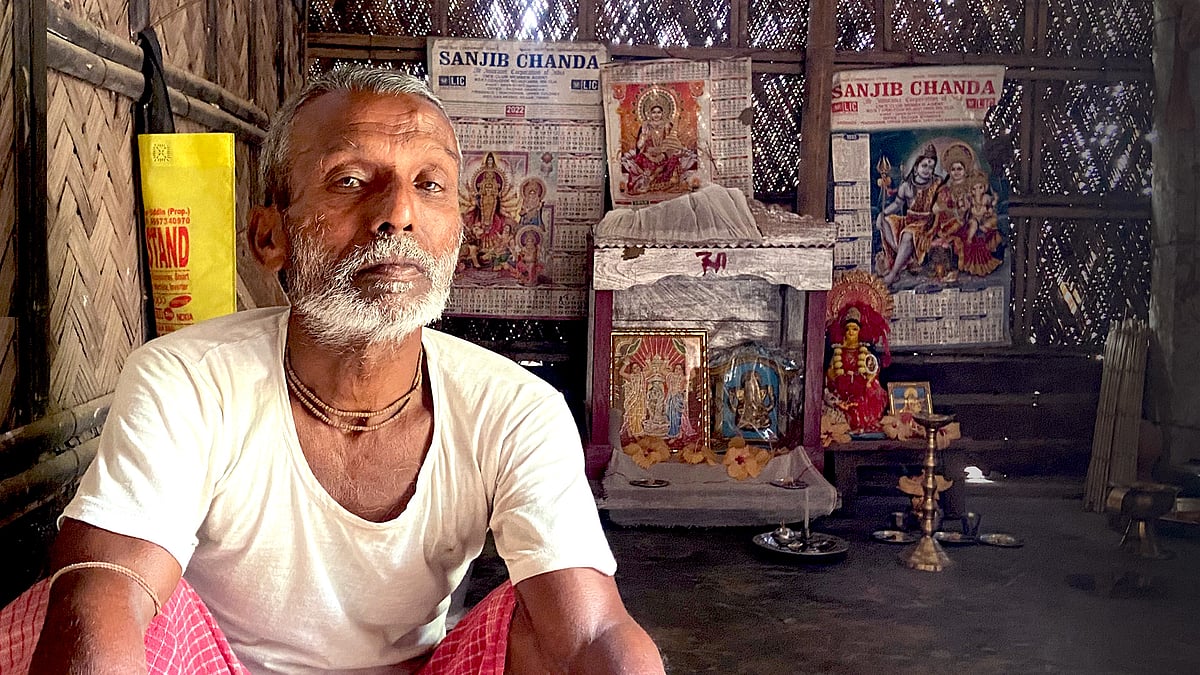Hindutva resistance, new faces, Cong gains: Reading the Northeast mandate
There has been a resurgence of ethno-nationalist politics in the region.
The Lok Sabha poll results from the Northeast, which is electorally small with 25 Lok Sabha seats but territorially significant, have found little space in the mainstream media. The region, however, saw significant shifts in political narratives, with the BJP-led NDA losing some of its fort in the region.
Fighting the polls under the shadow of the CAA implementation and the Manipur violence, the NDA, or regionally NEDA, witnessed a decline in its vote shares across Northeast, except a 1.6 percent rise in Assam and a 17.7 percent increase in Tripura. The largest fall in its vote share was in Manipur – by 23.4 percent – where it lost both the Lok Sabha seats ostensibly owing to the Manipur violence. It lost two other seats in Nagaland and Meghalaya, and secured both the seats in Arunachal Pradesh but recorded an 18 percent decline in vote share. Mizo National Front (MNF), which contested on its own but is a part of the NDA, was defeated in the single-constituency state of Mizoram.
The INDIA Alliance, particularly Congress, made strong gains – with a rise in vote share across Northeast, except in Meghalaya, Tripura and Mizoram. The party added three more seats to its 2019 tally, making the most dramatic return in both the Lok Sabha seats of Manipur with a vote share of 47.59 percent. In Tripura, where the two Lok Sabha seats were won by the BJP, the Congress fought alongside the CPIM and saw a 1.4 percent dip in vote share.
The Congress’s vote share slipped by 28.13 percent in Mizoram – where voters supported the Zoram People’s Movement over national parties and regional heavyweight MNF, much like its assembly elections last year. Meanwhile, Sikkim re-elected its regional party Sikkim Krantikari Morcha MP Dr. Indra Hang Subba with 42.7 percent of votes.
To understand what stood out in the Northeast in these polls, a look at some takeaways from a ‘spaces’ discussion held with journalists, activists and political analysts of the region, organised by the Reading Northeast India Collective on its X account.
Manipur: Violence, resistance to Hindutva, INDIA’s Meitei hardliner
The Congress swept the two Lok Sabha seats in Manipur. The party’s Inner Manipur candidate and former JNU professor Bimol Akoijam – widely regarded as a community leader and intellectual in the state’s public sphere – was a new face in electoral politics and his nomination came as a shocker for many.
However, Akoijam has been far from neutral, said journalist Makepeace Sitlhou. The professor-turned-politician’s hardline Meitei position was evident in his speeches and “not many from the Kuki Zo community were thrilled with Akoijam’s nomination, particularly because he was representing the INDIA bloc”.
Makepeace said that despite contesting on a Congress ticket, Bimol went out of the party line to push the NRC agenda. “This was likely to reassure his electorates that the perceived problem of illegal immigration and the Myanmar refugee crisis will be handled if he was to be voted to power. His victory, therefore, is also not entirely surprising. If he had run a more secular or ‘neutral’ campaign, it would have cost him heavily in the Valley. Entering into politics so late in the day, it would have been difficult for him had he not taken a Meitei-centric position.”
She also said that Rahul Gandhi’s Bharat Jodo Yatra “was well-timed and made a difference in Manipur”.
On the role of religion in the NDA’s defeat in Manipur, Makepeace said that the religiosity of the Manipur conflict is “undeniable for the Christian tribals of the region”. “The attack on churches brought a strong sense of insecurity among the Christians tribals, who so far had lived with a sense of security and protection from religious conflicts.”
She said that with the churchs’ considerable sway in politics, “the return of the Congress in power can be attributed to the religiosity of the conflict to an extent”.
In the Northeast, regional and ethnic nationalism has been dominant. While Hindutva nationalism has made inroads, parties with ethnic nationalism ideology have claimed the electoral space, especially in Mizoram and Meghalaya.
Makepeace said that the “resurgence” of ethnic nationalism is a response to the juggernaut of Hindutva politics in the region. “Both ZPM in Mizoram and VoTPP in Meghalaya have been on the rise. The ZPM made historic wins in the last assembly polls in Mizoram and the VoTPP opened its account in Meghalaya. To a great extent, I would attribute this resurgence of ethnic nationalism to the onslaught of Hindutva in the region. It has enveloped Assam. For the tribal Christians, this was triggered by what happened in Manipur. It became clear that the region is not immune to that sort of divisive politics.”
On the NDA’s “dismal” performance in the Northeast, Assam CM Himanta Biswa Sarma said that a “particular religion” which earlier did not get involved in politics, went against the NDA. He was purportedly hinting at the Christian community in an ironic speech even as the BJP’s poll campaign was largely driven by the Hindutva narrative.
Assam: CAA implementation, Muslim votes for BJP, Cong resurgence
With the CAA Rules notified in March, weeks ahead of the Lok Sabha polls, the issue of the settlement of the Chakma people in Arunachal Pradesh and the question of citizenship in Assam resurfaced.
These concerns were covered by regional media outlets. However, the prior implementation of the NRC in Assam purportedly pacified the people in the northeast. Nine of Assam’s 14 Lok Sabha seats were won by the BJP, two others by its allies – UPPL and AGP, while the Congress secured three victories.
One participant was of the view that going into elections, the CAA was a significant political issue but did not become a significant factor for voting as its “cumbersome rules made it all very complicated” and so it did not play out as expected in the Barak Valley – resulting in the BJP’s victory in Silchar.
It is understood that the Maiman (Muslim) community, belonging to the marginalised caste, supported the BJP in Karimganj, as they were promised indigenous status and reservation of two percent in government jobs. This secured the saffron party’s seat in Silchar, where the Congress had recorded fissures within its local cadre with its leader Sushmita Dev’s exit from the party. “At many places, the Congress fielded weak candidates despite the fact that there was an anti-BJP wave.”
Meanwhile, the BJP’s stance, bolstered by Assam CM Himanta Biswa Sarma’s statements, shifted throughout the polling. Sarma started his campaign with a purported anti-Muslim rhetoric and initially said in a public meeting that the BJP does “not need Muslim votes”.
In the middle of the polls as the BJP realised that there would be a serious tussle between Hindu and Muslim voters in certain areas, Sarma began seeking Muslim votes over welfare schemes. As the results were announced on June 4, Sarma gloated that “despite 40 percent of Assam’s population being minority, the BJP secured a victory”.
The Congress too registered significant wins in Assam. But the post-poll claims that Muslims had voted en-bloc for the Congress and that it was a Muslim party is an inadequate explanation for its rise. The case in point is Congress’s Rokibul Hussain’s win in Dhubri constituency, which he secured against AIUDF chief and three-time MP Badaruddin Ajmal, with a margin of over 10 lakh votes. A similar scenario was witnessed after the Assam Movement in late 1980s, when Assam Gana Parishad won elections in many constituencies with the support of the Muslim community.
Journalist Rokibuz Zaman said that the big margin for Hussain’s victory was also because of the huge number of voters. “Dhubri now has 26.6 lakh voters and the polling percent was almost 92 percent, which means almost 24 lakh people voted. And 80-90 percent of voters here are Muslims. Dhubri Lok Sabha is close to the border district of Nalbari. And the region is majorly Muslim inhabited. Traditionally, before AIUDF was formed, the locals here are Congress voters.”
Rokibuz said the main reasons for the locals’ support to Hussain were anti-incumbency, Congress’s allegation that the AIUDF is the BJP’s B team, and Rahul Gandhi’s Bharat Jodo Yatra which passed through the area. “I think Muslims voted in a larger context that they need to defeat the BJP at the national level.”
Abhishek Saha, journalist and author from Assam, said that the delimitation exercise has changed the boundaries of the constituencies in a strategic manner to reduce representation of Muslims in total seats. “Certain constituencies have been very clearly and surgically divided on religious lines by the delimitation exercise, especially in lower Assam districts of Barpeta and Dhubri. Muslim areas of Barpeta have been attached to the Dhubri constituency, although the nearby Hindu area is in Barpeta constituency. It’s quite striking how these lines have been drawn. It had quite an effect on electoral representation.”
On Ajmal’s defeat, Saha said that the AIUDF’s political future “seems uncertain now”. “There’s very pronounced doubt on where the party will go from here. There’s the question of whether there will be a vacuum created within the Bengali Muslim community – if Ajmal declines, who comes to claim that space?”
Among the Congress’s other big wins was Gaurav Gogoi’s victory in Jorhat, where CM Sarma had intensely campaigned for the BJP.
One participant said that the loss in Jorhat seat is also “going to sting the BJP”. She said the poll eventually took the form of “a very personalised contest between Sarma and Gogoi. There is a history between them and Sarma treats the relationship as a personal rivalry. Sarma had become the face of the BJP campaign. So, it is being seen as a personal loss for him, especially because Gogoi was contesting from the seat for the first time.”
This was despite several obstacles faced by the Congress, including many of its leaders jumping ship to the BJP. “The Congress feels it has achieved some kind of a victory and improvement in its morale since last time, while the Assam BJP is not at all happy with this outcome here,” the participant said.
10 uncontested wins in Arunachal assembly polls, young voters
There is a history of uncontested wins in some northeastern states, particularly Arunachal Pradesh. In the assembly polls this year, which coincided with the Lok Sabha polls, the state witnessed 10 uncontested wins, including incumbent Chief Minister Pema Khandu’s victory from Tawang.
In 2014, 11 seats were won uncontested. The lack of opposition denies the electorate a chance to choose and is adverse to democracy.
On the reasons for uncontested wins, journalist and activist Tongam Rina had earlier written that unless one is born into political families, people “spend years cultivating electorates, so withdrawal at the last moment usually involves enticement, cash, and lots of promises and pacts. Sometimes, standing for elections also has the same motivation of pacts and enticements.”
Rina added that the turnout of young voters in Arunachal Pradesh was significant in both assembly and Lok Sabha polls. In the West Lok Sabha constituency, BJP minister Kiren Rijiju, who is locally popular among the youth and women, won against former Congress CM Nabam Tuki with over one lakh vote margin. She said that while the BJP “wasn’t confident, it strategised well”.
BJP’s alliances with tribal parties
The BJP has formed alliances with regional tribal parties across the Northeast to cement its presence in tribal areas. In Assam, its ally the UPPL, known as the party of the Bodos, secured the Kokrajhar seat. The tribals, on the other hand, look at it as a marriage of convenience, vying for sixth-schedule protection or separate administration.
However, Makepeace emphasised that while these alliances bring some benefits, they may not be able to fulfil all social and political aspirations of the tribals.
In the case of Tripura, Rokibuzz said that the Tipra Motha Party, “appears to have surrendered to the BJP”. “All the demands of TIPRA Motha, like the demand for a separate state, Greater Tipraland, are not there in the one-page agreement signed by the two parties,” he said.
He added that the agreement also does not touch upon the demand for the Kokborok language’s inclusion in the eighth schedule, financial autonomy, directing funding from the centre to the ADC to boost tribal economy, and increasing tribal Assembly Sabha seats in the hills.
Meanwhile, even as TIPRA chief Pradyot Manikya has insisted that there is more to the BJP-TIPRA deal, the strengthened presence of the BJP in the state has meant that his own sister Kriti Devi Debbarman contested from a BJP ticket in Tripura East and won with a thumping majority.
The BJP’s tribal alliances also provide the RSS with opportunities to expand its reach and agenda among the tribals. In Assam, several tribal communities, backed by the RSS, have called for the delisting of converted tribals from the ST category, mostly Christians.
Many among the tribals resist such interventions. But Rina said that she doesn’t see it as an ideological penetration of the Hindutva in Arunachal, and the election result is also driven by “pragmatic alliances” rather than Hindutva ideology.
She added that the RSS has been in Arunachal Pradesh since the early 1960s and their attempts have brought about “profound changes in tribal culture and belief systems”.
But with defeat to the AIUDF and the BJP’s rhetoric targeting Muslims, what turn will the electoral politics take for the minorities in the region? Will ethnic-nationalism continue to rise? Or will its modest win serve as a wake up call to the BJP? It is to be seen.
This piece has been compiled by Manoranjan Pegu, Suraj Gogoi, Angshuman Choudhary on behalf of the Reading Northeast India collective. It is based on the inputs given by participants during the X Spaces discussion held by the Reading Northeast India Collective on its account.
If you’re reading this story, you’re not seeing a single advertisement. That’s because Newslaundry powers ad-free journalism that’s truly in public interest. Support our work and subscribe today.
 Hafta 489: RSS-BJP ‘animosity’, Northeast ‘surprise’, ‘unpredictable’ Maharashtra
Hafta 489: RSS-BJP ‘animosity’, Northeast ‘surprise’, ‘unpredictable’ Maharashtra In Assam, two valleys divided on CAA, united in its absence as poll plank
In Assam, two valleys divided on CAA, united in its absence as poll plank Inside Northeast India’s biggest media empire: Himanta Biswa Sarma’s journey with Pride East
Inside Northeast India’s biggest media empire: Himanta Biswa Sarma’s journey with Pride East